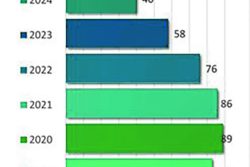An enduring proclivity on the part of successive political administrations in Guyana has been to rattle off strings of high-sounding and politically appealing undertakings designed to bring about an instant ‘feel good’ sensation amongst the electorate, only to have those commitments fall by the wayside, often without even an official explanation. The other point that should be made here of course is that these shenanigans are no more than momentary attention getters, distractions if you will. They are frequently, attempts to please or placate a particular constituency, to distract public attention from some extant or imminent ‘crisis’, to burnish the image of one ministerial portfolio or another or else to try to head off some ‘political hot potato.’ At heart, this practice is rooted in dishonesty.
Part of the reason why this practice has become embedded in political behaviour is because, for the most part, we in the media, for one reason or another, are nowhere near as fastidious as we should be in holding the feet of government to the proverbial fire.
Back in February, February 21, 2022 to be precise, in an article headlined “Farmers, agro-processors to benefit from lucrative markets this year” (Agency News) the Ministry of Agriculture announced that government was “taking a more proactive approach to ensure farmers, agro-processors and exporters are linked to the most lucrative markets, locally, regionally and internationally.” It went further, declaring that the initiative would “see the New Guyana Marketing Corporation (GMC) developing strategies through extensive market research this year, to promote Guyana’s agricultural products here, across the region and internationally.” These particular initiatives, the Ministry of Agriculture declared, would be funded with “the sum of $340 million” that had been allocated to “fast track the initiative through the participation of trade fairs and exhibitions, and the use of e-marketing/e-commerce platforms.” The announcement goes on to disclose that the broader initiative included plans by government “to establish Guyana shop corners and create long-term linkages with private and public institutions.”
The missive went further asserting that government had been “successful in hosting a massive farmers’ market at the Lusignan market tarmac…” which event it said had “received support from scores of consumers in and out of Region Four” and had provided an avenue for agriculturists “to display and sell their fresh produce on a larger scale.”
One might add that the Minister of Agriculture Zulfikar Mustapha is quoted as saying that “since our government took office, we have been meeting with various stakeholders, farmers, middlemen, agro-processors, sellers and exporters to discuss the issues facing their particular value chain and how to support the improvement of the chain with support from the agriculture agencies,”
All of this was made public by the government back in February.
Part of the problem here, of course, lies with us in the media. The reality is that the myriad distractions that are part of our routine do not always allow for scrupulous monitoring of governments’ undertakings (many of which are made purely for propaganda purposes) in a manner that allows for government’s feet to be held to the fire.
Perhaps this time around the Minister/Ministry of Agriculture could favour us with a public response on the aforementioned undertakings that it gave all those months ago.







